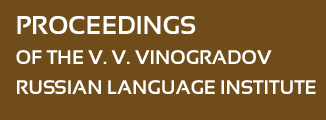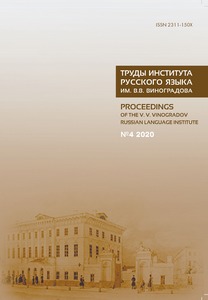THE INTER-WORD OVERLAP IN MODERN RUSSIAN SPEECH
Abstract:
This work considers an occasional method of modern Russian word formation — an inter-word overlap, the status of which is disputable in Russian lin guistics. The a ticle shows correlation of this method with contamination and consistently considers the inter-conditional overlap as a special kind of contamination. The paper reveals the me chanism of inter-conditional overlap (reduction of two lexical units, the union of their truncated parts, the imposition of identical segments and the appearance of quasimorphs). The work characterizes the areas of use of derivatives formed this way and pays special attention to the functioning of words created by inter-word overlap in modern artistic speech, where their semantics become noticeably more complicated and their functions expand.
It is shown that such neologisms in literary texts serve not only as a means of language play, but also as a way of creating a complex image, folding a tropeic structure, and expressing author’s assessments. The research demonstrates that the inter-conditional overlay as a way of expressive compressive word formation is activated in modern Russian, the productivity of derivatives created in this way is enhanced, and the scope of their use is expanding.


